
- This event has passed.
(S)ELF PORTRAITS: FITCION, FANTASY AND SCI-FI IN PORTRAIT
16 Nov - 20 Feb

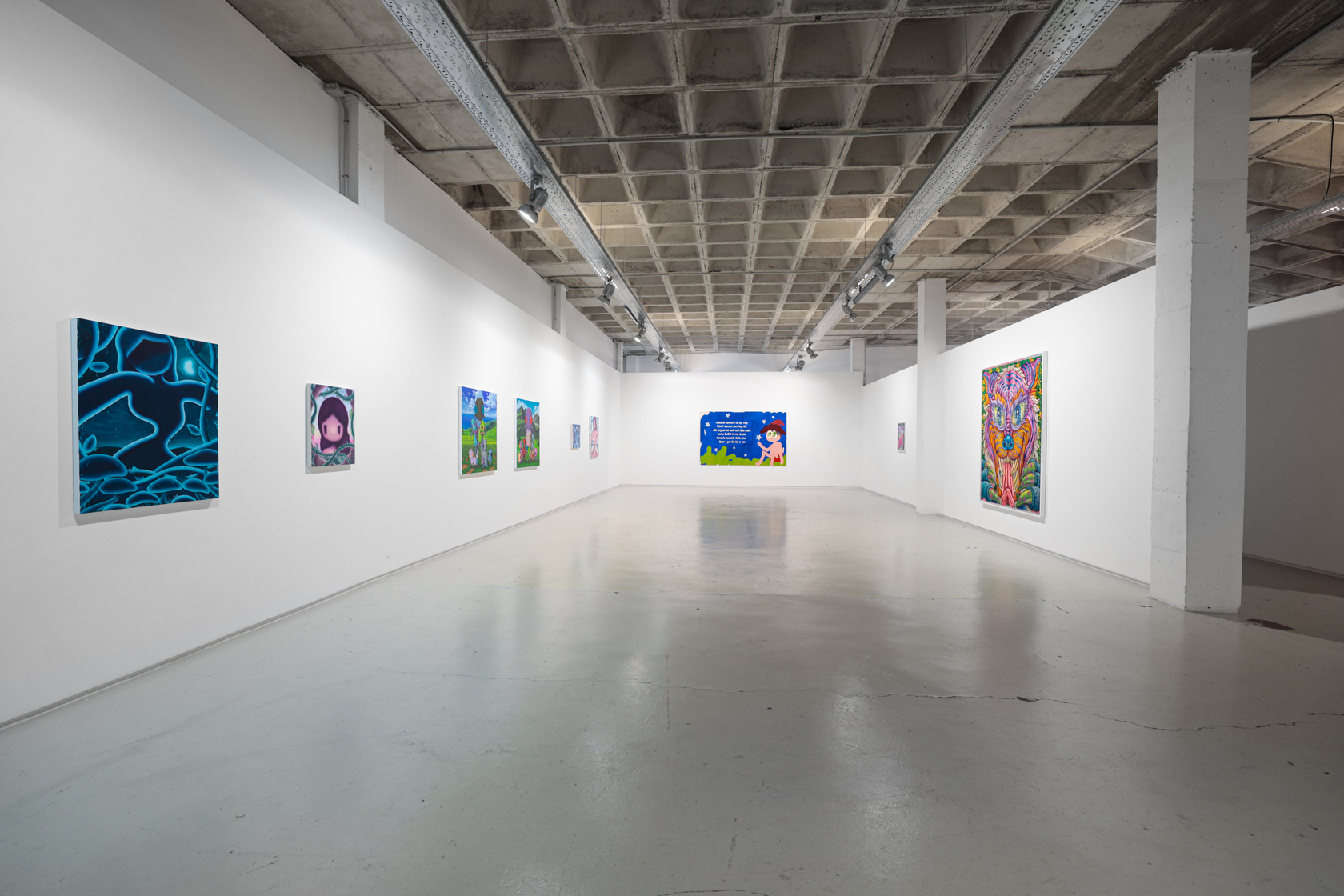


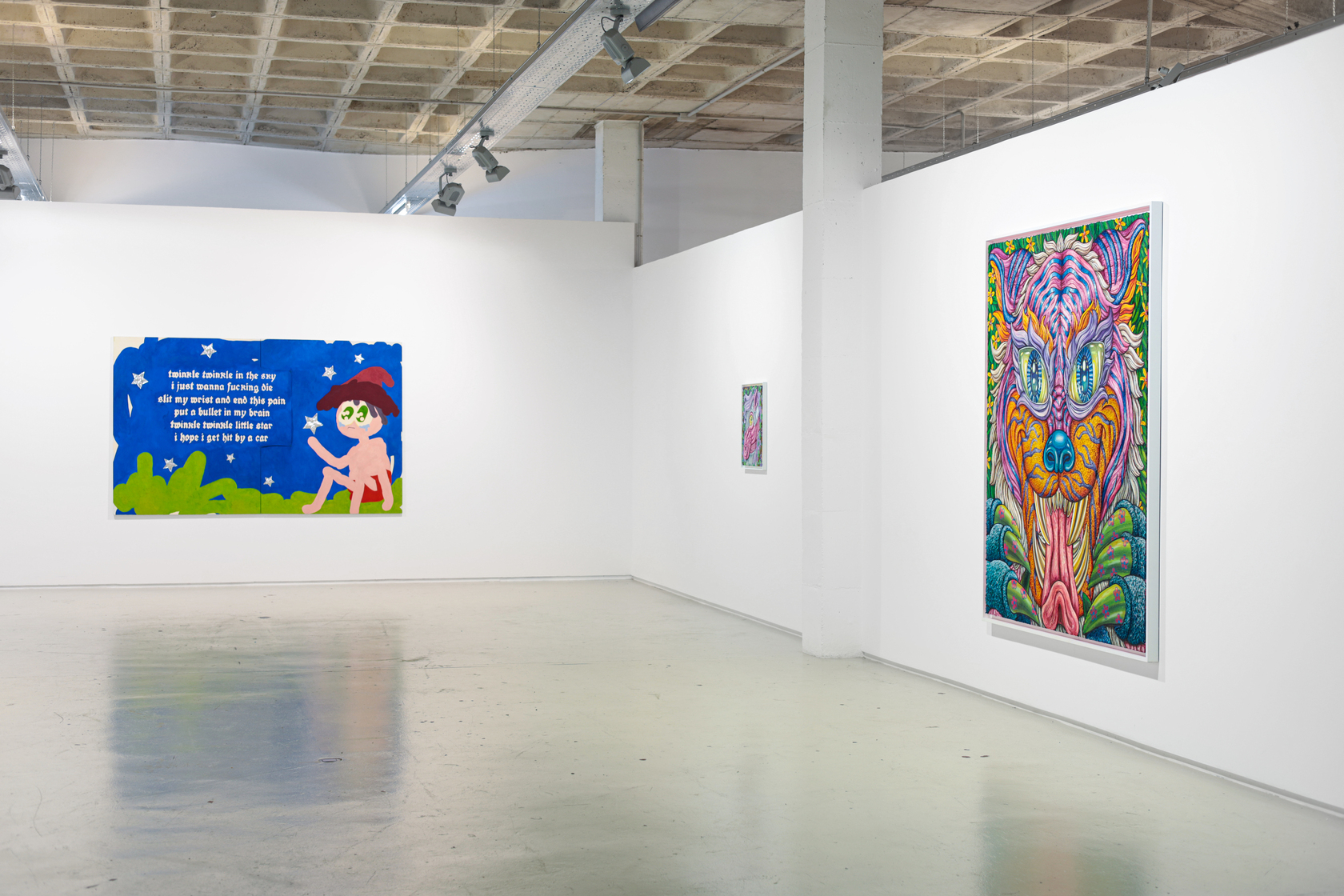


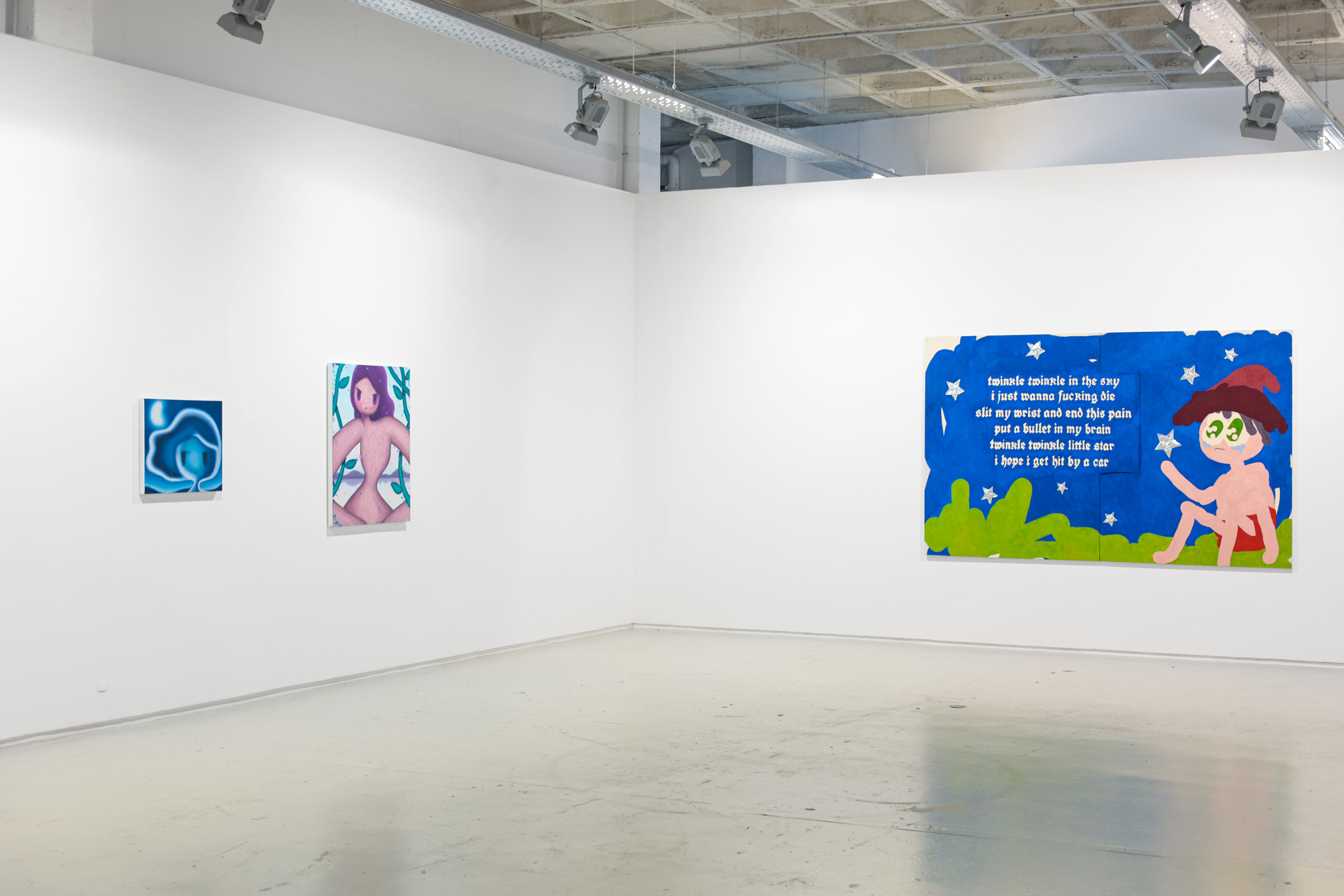
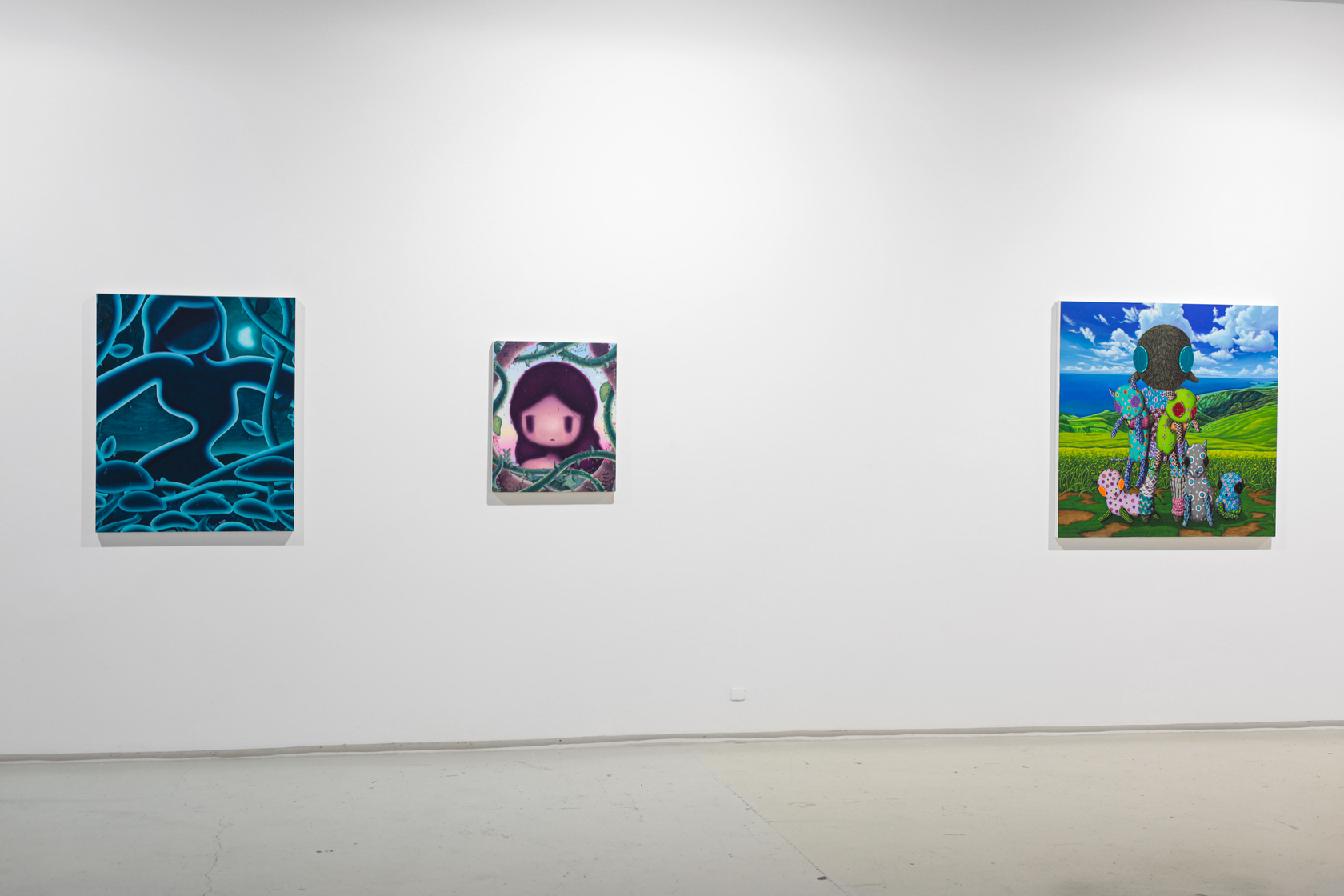

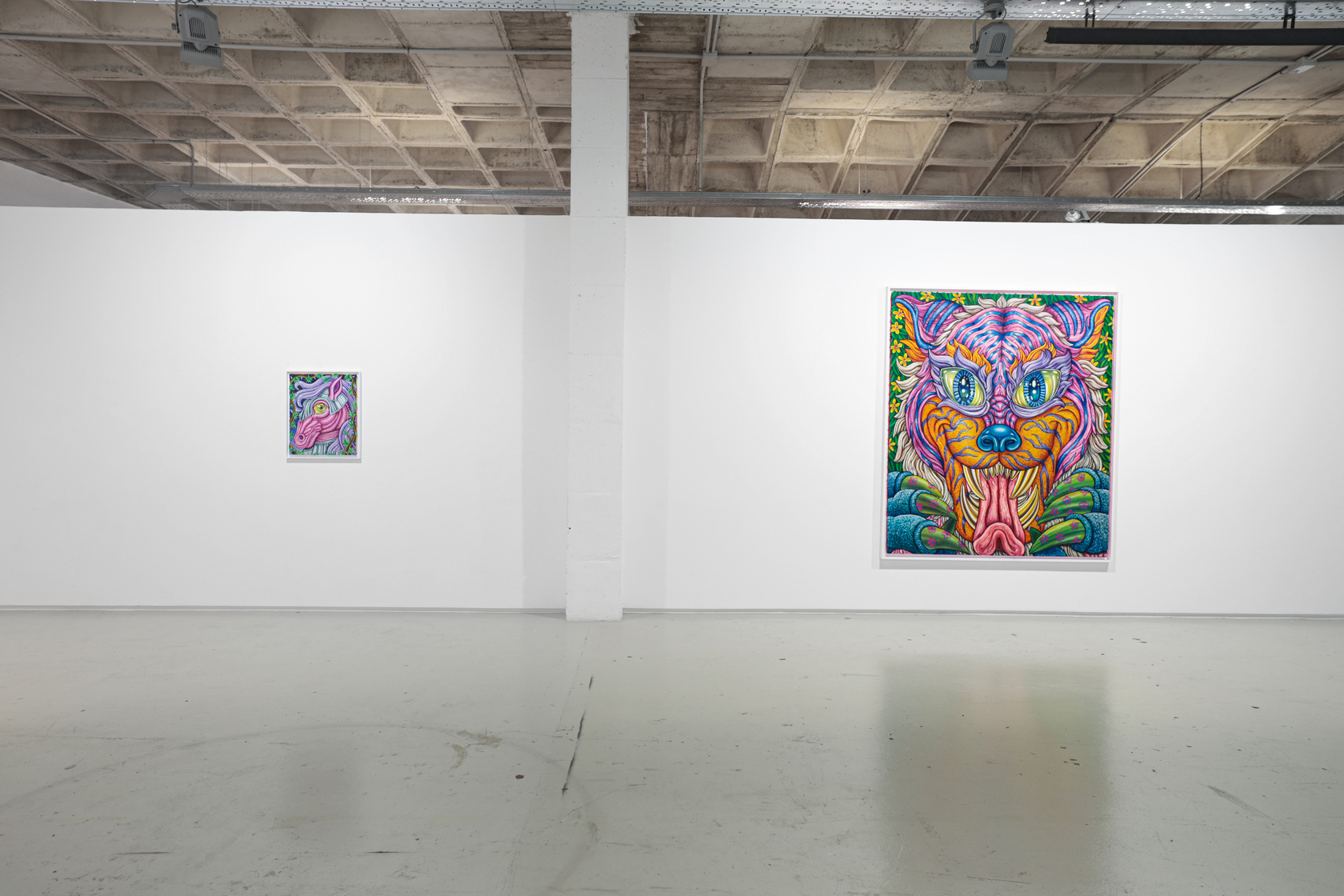
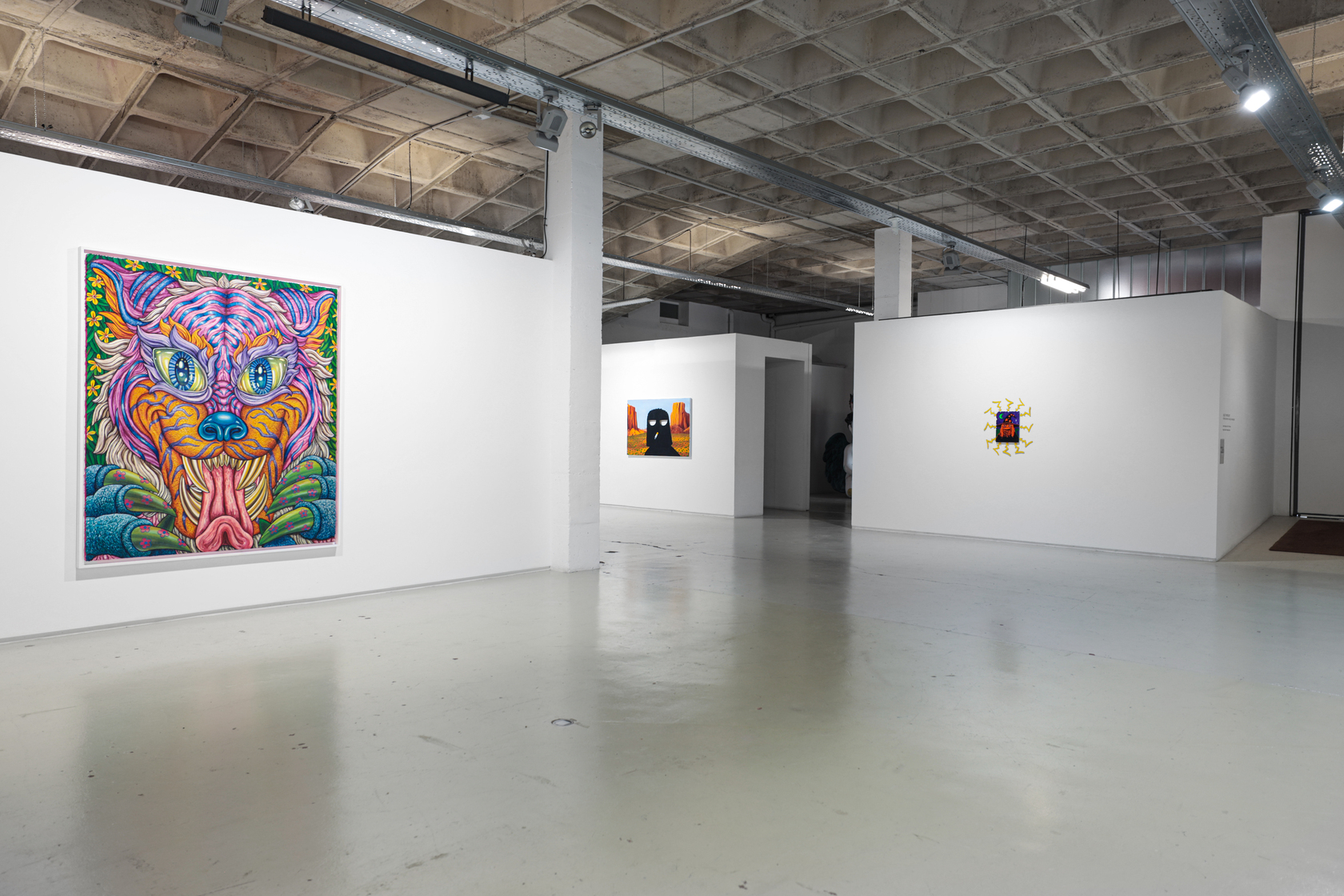
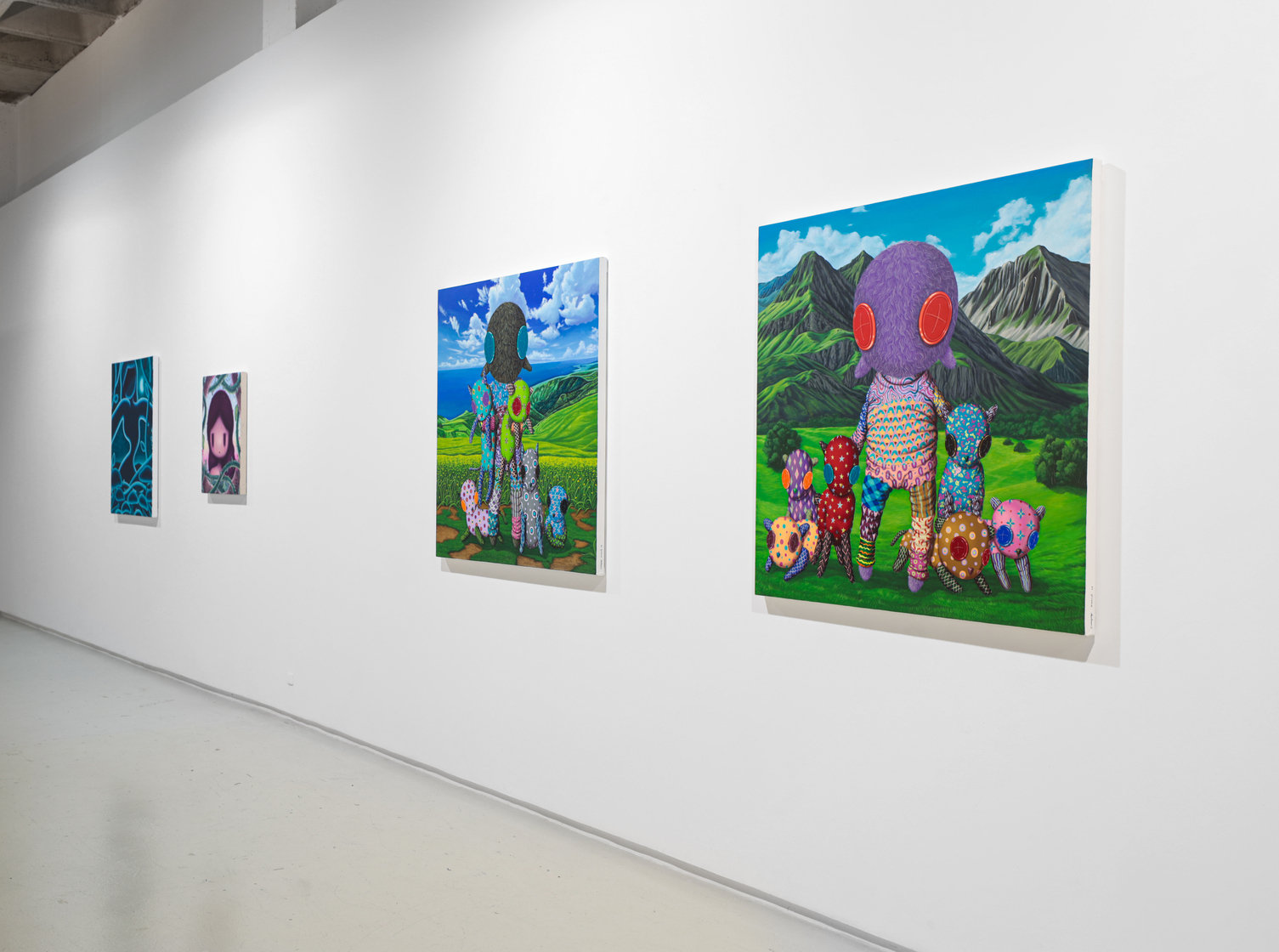
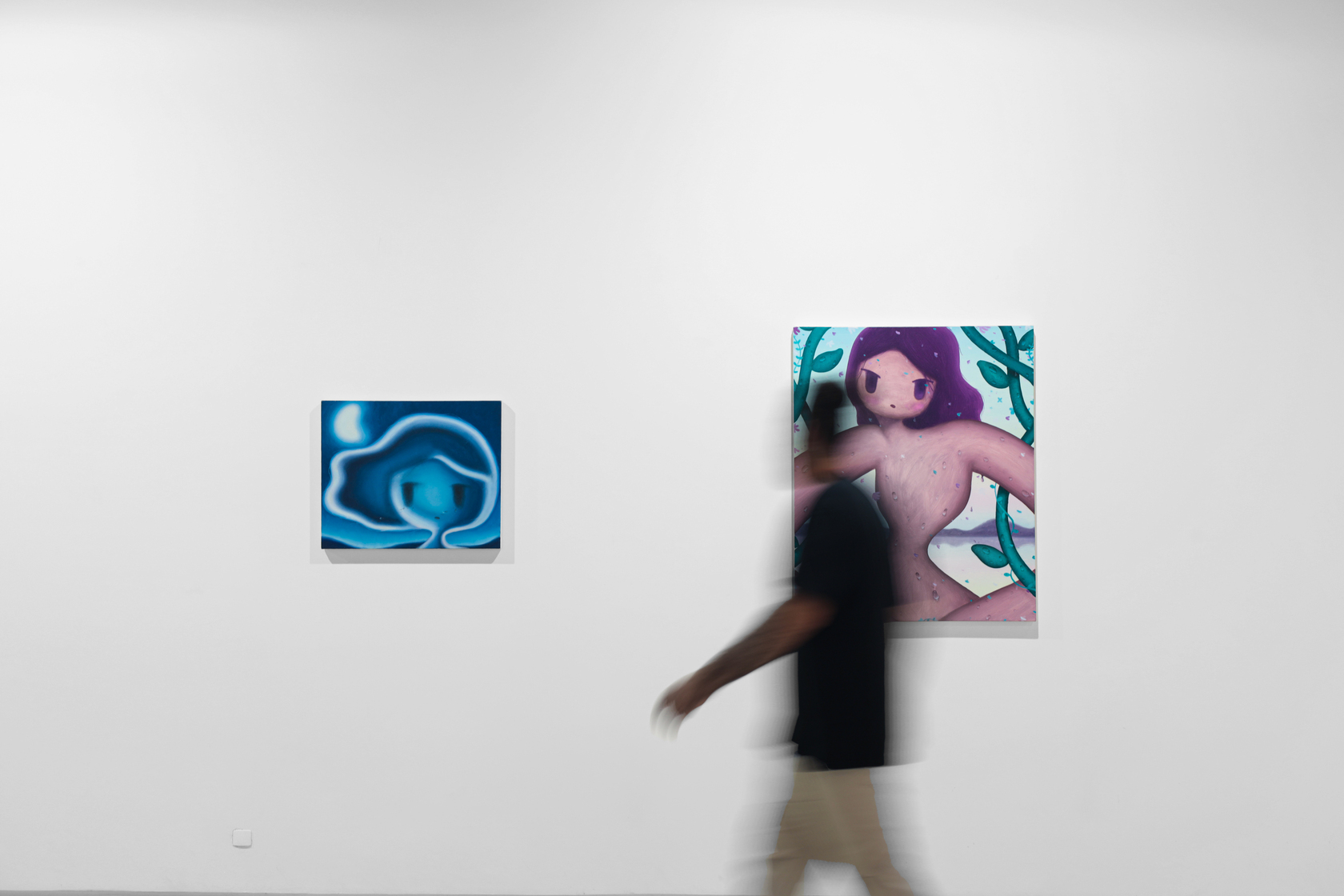
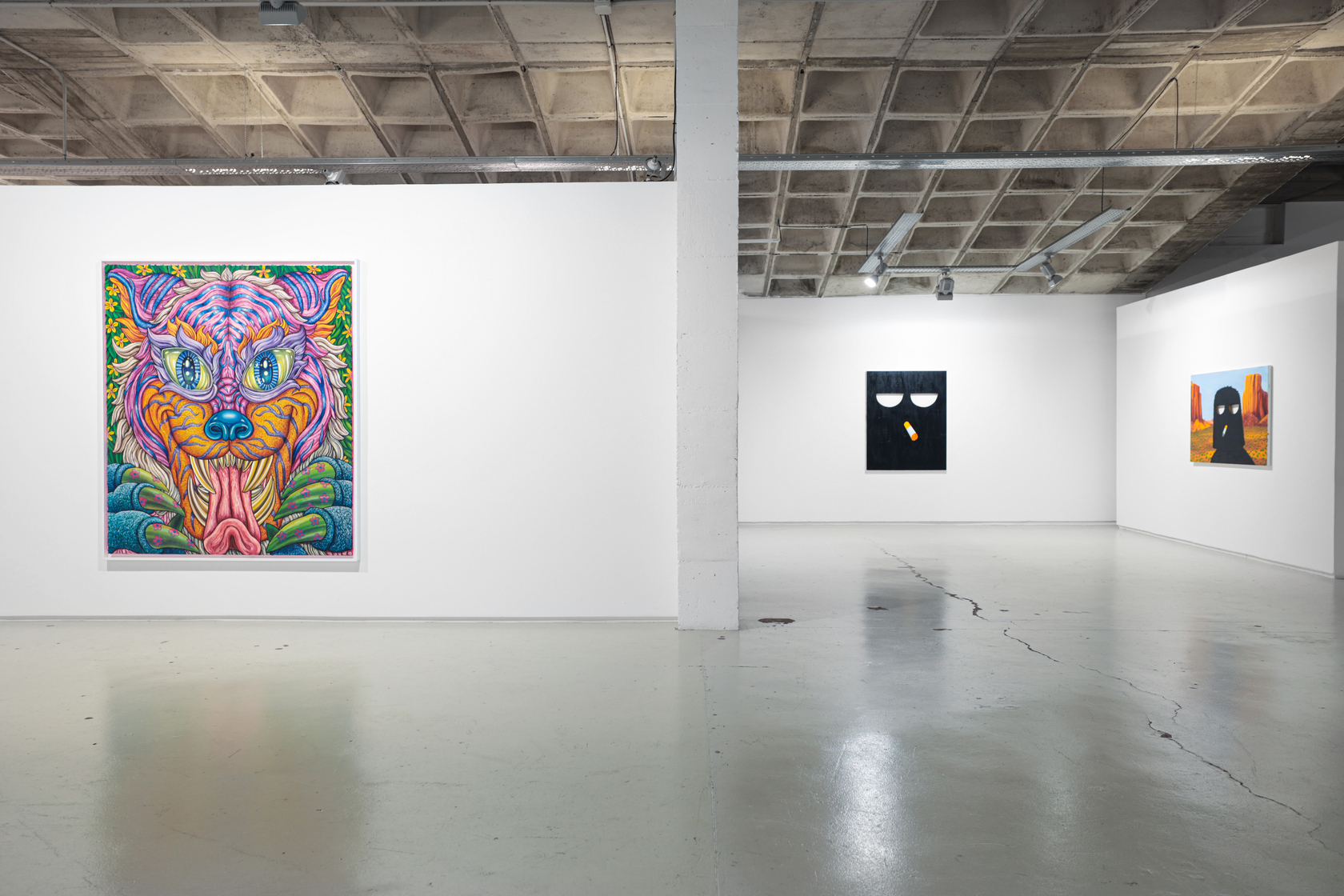
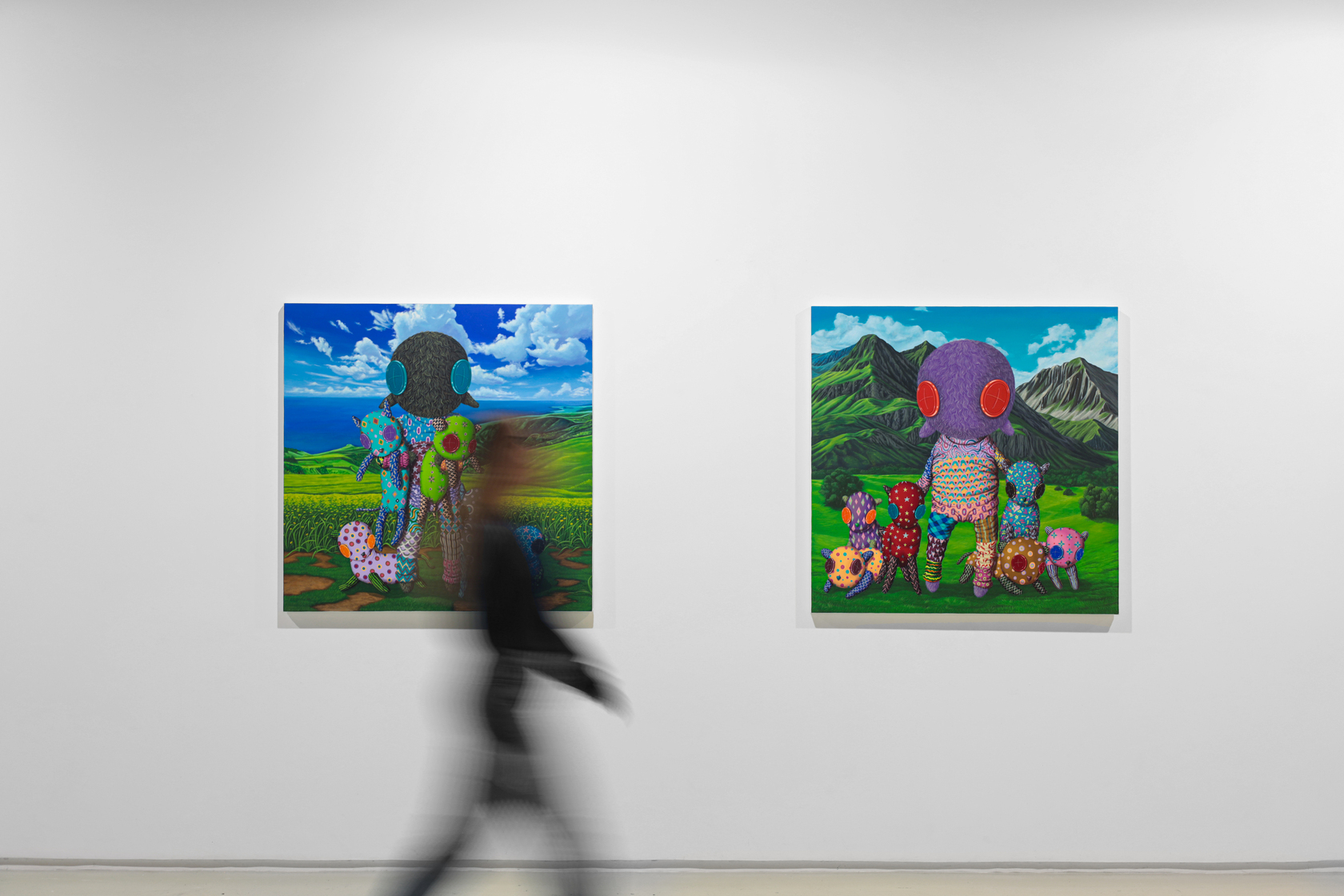
(S)ELF PORTRAITS:
Fiction, Fantasy and Sci-fi in portrait
ANDREW MAUGHAN | BACK | FRAN BAENA | MIGUEL SCHEROFF | SUANJAYA KENCUT
(S)elf Portraits: Fiction, Fantasy, and Sci-Fi in Portrait YUSTO / GINER presents the group exhibition (S)elf portraits, featuring fictional portraits by the artists Andrew Maughan, Back, Fran Baena, Miguel Scheroff y Suanjaya Kentuc.
(S)elf Portraits: Fiction, Fantasy, and Sci-Fi in Portrait offers a bold exploration of contemporary portraiture, where Andrew Maughan, Back, Fran Baena, Miguel Scheroff, and Suanjaya Kentuc destabilize traditional notions of identity and subjectivity. Each artist approaches portraiture not as a static representation but as an experimental platform, challenging conventions of the human and the imagined through their unique pictorial language.
In this collection of works, portraiture is redefined as a liminal space where the real and speculative converge. Each artist employs a distinctive approach to portray a spectrum of fluid identities constructed through layers of fiction, narrative, and fantasy. The human face becomes a symbolic surface, open to interpretation and capable of transcending its own limits. Maughan, Back, Baena, Scheroff, and Kentuc depict figures that seem to emerge from alternate dimensions, suggesting that identity is a mutable phenomenon, shaped by both internal and external forces that transform and enrich it.
The exhibition presents a sophisticated vision of identity as a speculative process, inviting the viewer to confront the malleability of the “self.” This painterly exercise goes beyond portraiture as a mere reflection, creating a narrative space where desires, projections, and subjective realities overlap. Thus, (S)elf Portraits not only explores visual representation but also questions authenticity and interpretation in contemporary art.
Through this exhibit, we are invited to contemplate identity as an evolving construct—a story in progress that finds in painting an ideal medium for articulation and reinvention. The exhibition is, in essence, a meditation on the nature of representation in an era of hyperreality and post-truth, where each work challenges the boundary between reality and fiction, the tangible and the imagined, reminding us that in art, as in life, identity is always a possibility in constant expansion.
ANDREW MAUGHAN

Andrew Maughan (b.1987 Newcastle-upon-Tyne) is a London-based artist who works predominantly in painting and sculpture. Before the Royal Academy Schools, Maughan studied at Northumbria University.
The Great Assassin These paintings centre around a protagonist called the Great Assassin, inspired by the Zodiac serial killer: a white man who murdered people, used the media to spread fear and increase his infamy, and got away with it. Pictured at cinematic scale, the Assassin wears a hooded mask made of black hair. Half-glimpsed in wing-mirrors, he is caught in moments between action – seen in his car, driving through rain, smoking a cigarette.
In an act inspired by Bertolt Brecht, blank eyes are cut directly from the canvas, breaking the painting’s fourth wall. Menacing in its ambiguity, the work addresses tropes of power and its abuse, as the Assassin cuts a sinister figure in vivid landscapes.
BACK
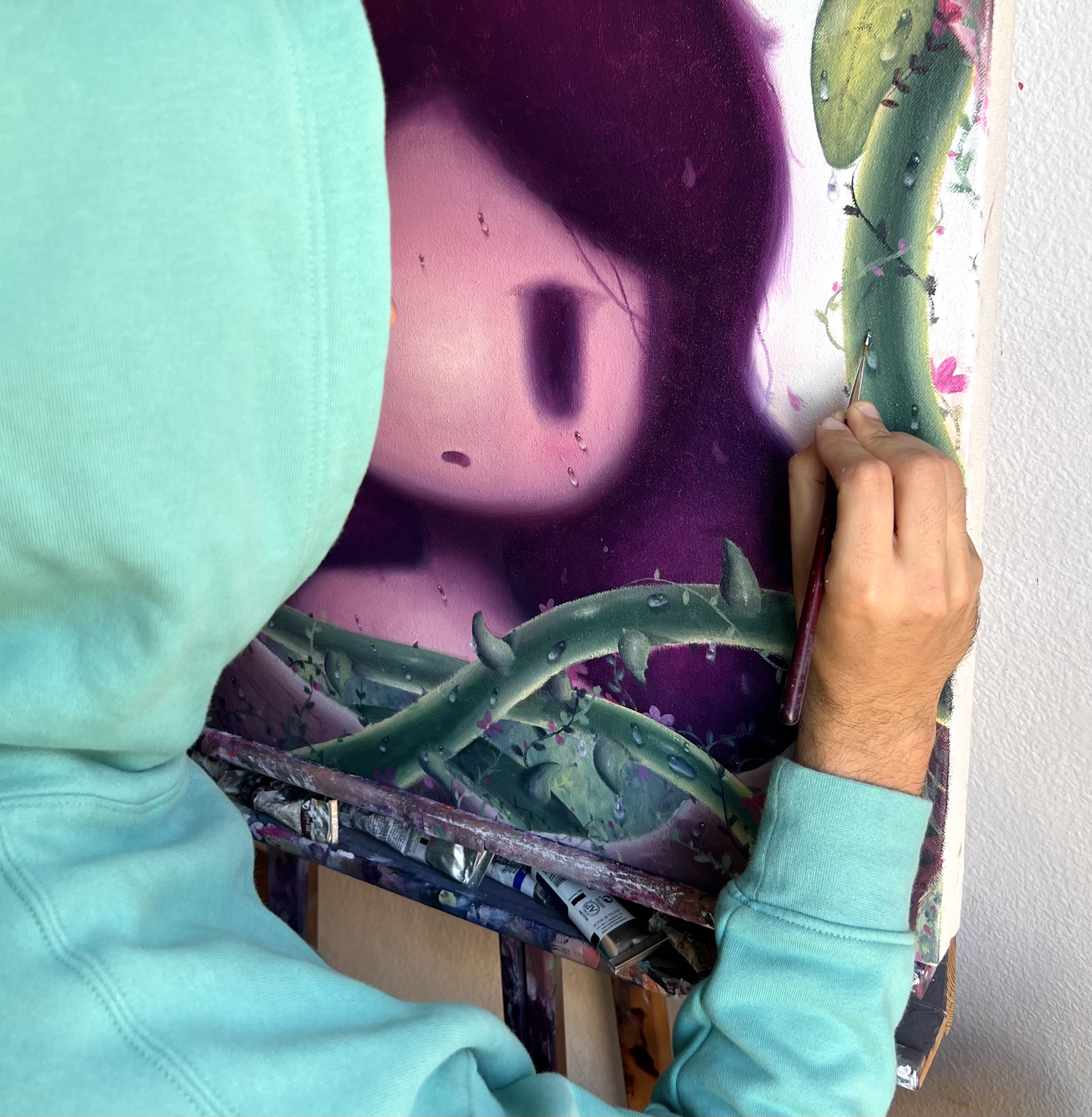
With an aesthetic rooted in nature, graffiti, and anime, Back presents work focused on the human figure. In his approach to creating images, the characters at the center of the scene seem to be in harmony with their surroundings, depicted in ways that suggest their emotions or, at times, appear expressionless. They are represented with a sculptural quality, occasionally drawing from digital aesthetics to create figures with soft curves and an ethereal appearance.
For Back, graffiti remains a key part of his identity, expanding his work and nourishing it with elements that interest him from every window he opens, allowing him to build his own unique universe.
FRAN BAENA
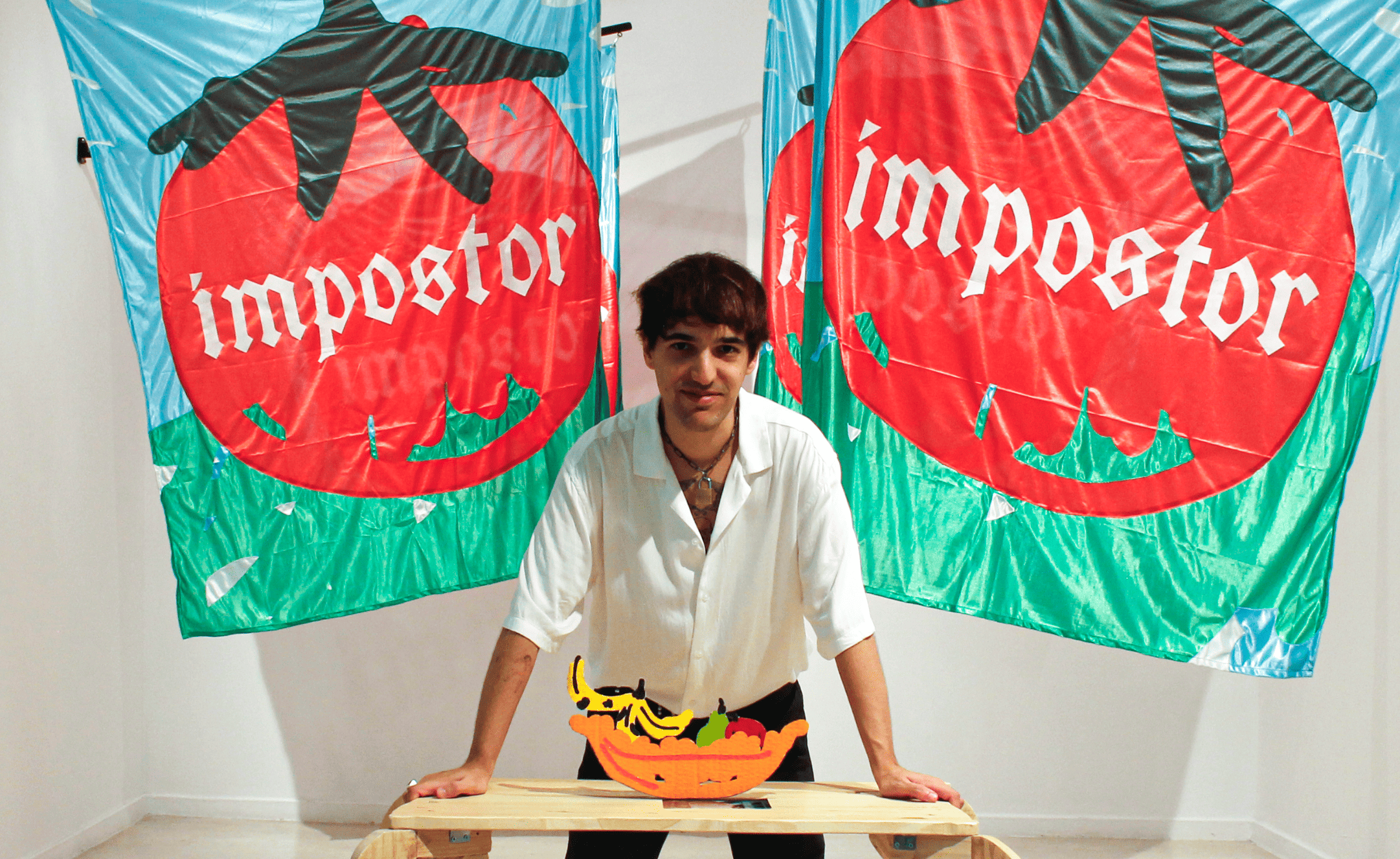
Fran Baena (b. 1999, Priego de Cordoba, Spain) tries to establish a link with the adolescents of today and the dire tomorrow that seems to be coming, constructing a work that embodies a friend to cry with and laugh, in this way creating evidence of the aftermath of contemporary sadness, in the same way that rock and alternative music bands have done since the 80s.
His painting is particularly linked to the post-internet world, highlighting the poetic politics that implicate painting and the images consumed on the web. Paying special attention to the irony currently used to laugh at our mis- fortunes as a last resort, he does this through the analysis of sad and cynical memes and songs. His work is a record of the uncertainty of our contempo- rary tragicomedy, together with a deeply existentialist philosophy: Of being so alive that one only thinks of death. Because no depressed person wants to die, they merely wish to escape from life.
MIGUEL SCHEROFF

Scheroff’s work has undergone a significant progressive transformation since his early works of 2009, which were darker and clung to an exaggerated hyper-figuration – sometimes monstrous – to his current work, where colour, material, and fantastical characters take on a fiercely central role.
Scheroff’s early paintings are motivated by a sense of alarm over the constant flow of terrifying news from the media and the unsettling tension in which contemporary society seems to teeter. Through painting and installation, these works find a way to reflect on the great universal conflicts and their devastating consequences.
“We belong to a turbulent generation immersed in emotional instability; we inhabit a volatile territory where fascinating beauty is constantly marred by alarming social dramas. Without shame, I acknowledge that my work largely emerges from existential anguish, loneliness, disillusionment, or what we know as ‘millennial sadness.’ Always in search of an apparently impossible rationale for so much violence, apathy, and false promises. In my early paintings, I worked with heartbreaking images of large, fleshless faces that displayed human sadism, relieved by a luminous gaze that invited hope; humans are capable of materialising both the most benevolent acts and the most terrible ones.”
In his latest series of paintings, these initial concerns seem to still be present but from a less obvious and dramatic perspective, more whimsical and fun. Radical colour and thick oil strokes shape caricatured characters that unfold in scenes sometimes inspired by the works of the great masters of painting. These scenes connect with contemporary world situations, using icons of millennial culture, cartoon or kawaii aesthetics, or the acidic colours of pop and Neopsychodelia. With this parallelism, Scheroff tries to highlight that the conflicts of the contemporary world are not so far removed
from those that worried society in other eras and were reflected on large canvases. The fantastical characters that appear in Scheroff’s paintings, sometimes immersed in chaotic scenarios, ironically interpret the theater of the everyday and strive to highlight their brighter, more creative, and brilliant side.
“I believe that what has always interested me most about painting, what hooked me to it, was its ability to stir the viewer’s deepest emotions, how that fictional construction based on brushstrokes can provoke a reflective reaction in those who confront it.”
SUANJAYA KENCUT

Suanjaya Kencut is a visual artist working primarily with paintings, sculptures andinstallations. He derived his inspiration from the traditional Balinese art and modern art installations he grew up surrounded by. The dolls are the main subjects in Kencut’s work.
Suanjaya Kencut is an artist from Bali who currently works in Yogyakarta. His homeland is very influential on all aspects of his paintings even though he doesn’t use traditional Balinese painting visuals in his work. However, all the elements in it are related to his subconscious view of Bali. All of his works come from personal experiences of what he saw, felt and expressed. Experience is not only about beautiful things from memories but also experience is not good but sticks.
The visuals in his work often present dolls that are innocent and expressionless. The doll came about through various collaborations of subconscious experiences, which were born from childhood experiences regarding religious ceremonies, to small elements that influence aspects of his work.
Talking a little about his experience, in big Hindu ceremonies in Bali, Barong performances or large puppet figures are often danced and performed. That was his first experience admiring doll characters. Every temple in Bali is decorated with repetitive Balinese ornament carvings and is also decorated with a type of fabric with matching but dominant colors and ornaments, there are also additional beautiful knick-knacks with colors that are no less beautiful and varied. All these aspects that he often sees are the beginning of the formation of doll characters with various repetitions of motifs and colors. When he grew up, he also learned modern fashion with his cousin so that he became familiar with the characteristics of types of fabric, designs that suit, and know what the tastes of trend fashion recently. This experience influenced the final touches and look of the characters in the form of dolls with simple and repetitive motifs covered in pop colors.
He presents the artwork that can complete the audience expression not just specifically about himself, even though art is born based on the artist’s personal experience. Eyes are reflection of expression that will never lie like the window of soul. Buttons are a connection between one and another fabric. Referring to that analogy he wanted the work of art to connect himself to the audience through a common connecting expression when looking at his artwork. When he decided to make a character expressionless, the choice of color became very important to explain the story of the artwork. Moreover, the background color makes a work of art more telling and has its own aura in each work. He aims to bring them to life by placing them in real-life situations.
Fran Baena among the 25 Spanish plastic artists under 35 with the most projection – Vanitatis
14 Jan, 2025
https://www.vanitatis.elconfidencial.com/estilo/ocio/2024-12-13/25-artistas-plasticos-espanoles-menores-35-proyeccion_4019822/
Talk with Fran Baena in Marbella Gallery Weekend
2 Dec, 2024
https://youtu.be/e4ZJdWCdTPo
www.juxtapoz.com MAGDA KIRK | INNER GLOW
6 Jun, 2024
https://www.juxtapoz.com/news/painting/magda-kirk-inner-glow-comes-out-in-madrid/
Ángeles Agrela, un modo femenino de mirar.
15 Apr, 2024
Ángeles Agrela, un modo femenino de mirar. Autor: Fernando Castro Flórez Localización: Descubrir el arte, ISSN 1578-9047, Nº 302 (abril), 2024, págs. 60-63 Resumen Esta artista multimedial, que ha logrado sintetizar la felicidad que le proporciona el arte, compone...
Ramón Muñoz: A SOGA Y TIZÓN
15 Apr, 2024
https://www.plataformadeartecontemporaneo.com/pac/a-soga-y-tizon-ramon-munoz-en-la-galeria-yusto-giner-marbella/
Fran Baena: “En los memes nada es tan banal como parece”
21 Feb, 2024
https://elemmental.com/2024/02/06/fran-baena-entrevista/
CICA Vancouver x Ángeles Agrela
16 Nov, 2023
ONE OF US: Yann Leto conversation with Manuel Ocampo
13 Sep, 2022
Yann Leto: ONE OF US Exhibition: 3th September – 16th October, 2022 Conversation with Manuel Ocampo Manuel Ocampo: You mention Freaks in your statement. What a movie! Do you feel yourself or your work have an affinity with the grotesque?...
Solo project by Daniel Núñez at ARTE SANTANDER 2022
11 Jul, 2022
Details
- Start:
- 16 Nov
- End:
- 20 Feb
- Event Categories:
- Andrewn Maughan, BACK, EXHIBITIONS, Fran Baena, Miguel Scheroff, Suanjaya Kencut
- Event Tags:
- Andrew Maughan, Fran Baena, Miguel Scheroff, Suanjaya Kencut
Local
- Yusto/Giner Gallery
-
C/Madera nº9
Marbella, Málaga 29603 España - Teléfono:
- +34 951 507 053